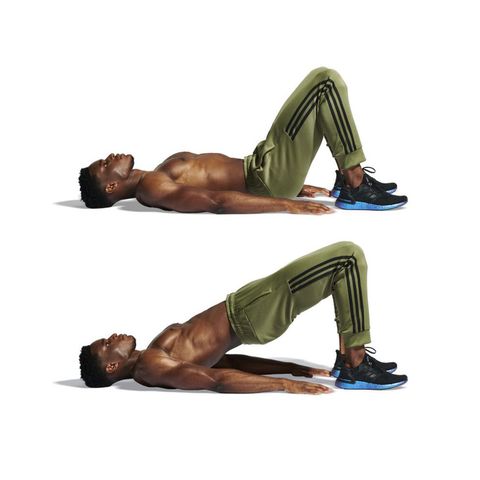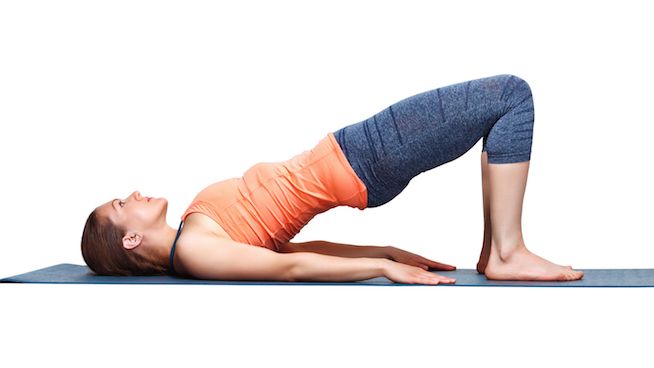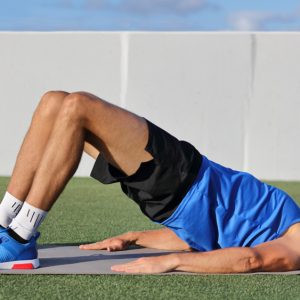 The gluteus bridge is an exercise for shaping the buttocks and back of the thighs , which can be performed with its own weight or with additional weight in the form of discs placed on the pubis. There are several versions depending on the location of the steps, as well as with one or two legs. Overall exercise is appropriate for women who want to tone and strengthen the gluteal muscles , but avoid risky exercises such as hyperextension , Knapsack presses and deadlifts with straight legs.
The gluteus bridge is an exercise for shaping the buttocks and back of the thighs , which can be performed with its own weight or with additional weight in the form of discs placed on the pubis. There are several versions depending on the location of the steps, as well as with one or two legs. Overall exercise is appropriate for women who want to tone and strengthen the gluteal muscles , but avoid risky exercises such as hyperextension , Knapsack presses and deadlifts with straight legs.
To perform the exercise you need a soft fitness mat on the ground and shoes that do not slip. If you want to increase the intensity, you will need a disc, dumbbell or dumbbell.
Muscles involved in the gluteus bridge
- gluteal muscles – large, ( Gluteus Maximus), medium (Gluteus Medius), small head (Gluteus Minimus )
- posterior thigh muscles ( Biceps Femoris Long Head, Biceps Femoris Short Head, Semitendinosus, Semimembranosus )
In the various embodiments, the muscles on the outside and inside of the thighs, the long spinal muscles, the abdominal muscles and others participate as synergists and extras .
According to the positions of the legs:
With open legs and knees to the side:
This option loads primarily the outer thighs and buttocks and especially the Gluteus Maximus .
With open legs and closed knees:
This option primarily loads the inner thighs and Gluteus Medius , Gluteus Minimus .
With legs closed and knees closed:
In this neutral position, the load is distributed evenly. This position is best suited for focusing on Gluteus Medius and Gluteus Maximus . The most suitable option for performing the exercise by beginners.
On one leg:
The load here is the same as lifting with closed legs and closed knees, but the intensity is double because all the weight falls on the muscles of one of the thighs. The position is difficult to balance, especially if performed with extra weight. This enhances the involvement of the stabilizing muscles.
Technique of performing lifting of the pelvis from the occipital leg in a variant with closed legs and closed knees:
- Lie on your back on the mat, bend your legs and transfer all the weight to your heels. Raise your fingers slightly. The position of the steps does not change throughout the performance.
- Raise your pelvis as high as possible, balancing with your arms outstretched on the mat.
- When you reach the peak, hold for a second and start lowering the pelvis.
You can use this exercise and its variants to tone and increase the strength of the gluteal muscles and back thigh muscles. Muscle toning also consists of “lifting” the gluteal muscles.


